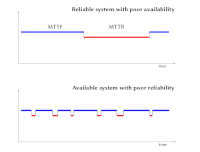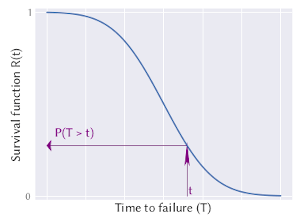Reliability engineering
Faults, failures, availability and reliability
Overview

In these slides, we give an overview of the role of reliability engineering in system safety and the way in which it is integrated into risk analysis.
This submodule is a part of the risk analysis module.
Course material
 |
Overview of reliability engineering |
 |
Python notebook with exercises in reliability calculations |
Other resources
We recommend the following sources of further information on this topic:
- Wired.com article Why Things Fail: From Tires to Helicopter Blades, Everything Breaks Eventually from 2010
-
 The book Reliability of Safety-Critical Systems: Theory and
Applications by Marvin Rausand, 2014, Wiley, which includes both theory and practical exercises.
The book Reliability of Safety-Critical Systems: Theory and
Applications by Marvin Rausand, 2014, Wiley, which includes both theory and practical exercises.
-
 The book Probability, Statistics, and Reliability for Engineers and Scientists
by Bilal M. Ayyub and Richard H. McCuen, 2025 (4th edition), CRC Press.
The book Probability, Statistics, and Reliability for Engineers and Scientists
by Bilal M. Ayyub and Richard H. McCuen, 2025 (4th edition), CRC Press.
-
 The book An
Introduction to the Basics of Reliability and Risk Analysis
by Enrico Zio, 2007, World Scientific Publishing.
The book An
Introduction to the Basics of Reliability and Risk Analysis
by Enrico Zio, 2007, World Scientific Publishing.
Published:
Last updated:
